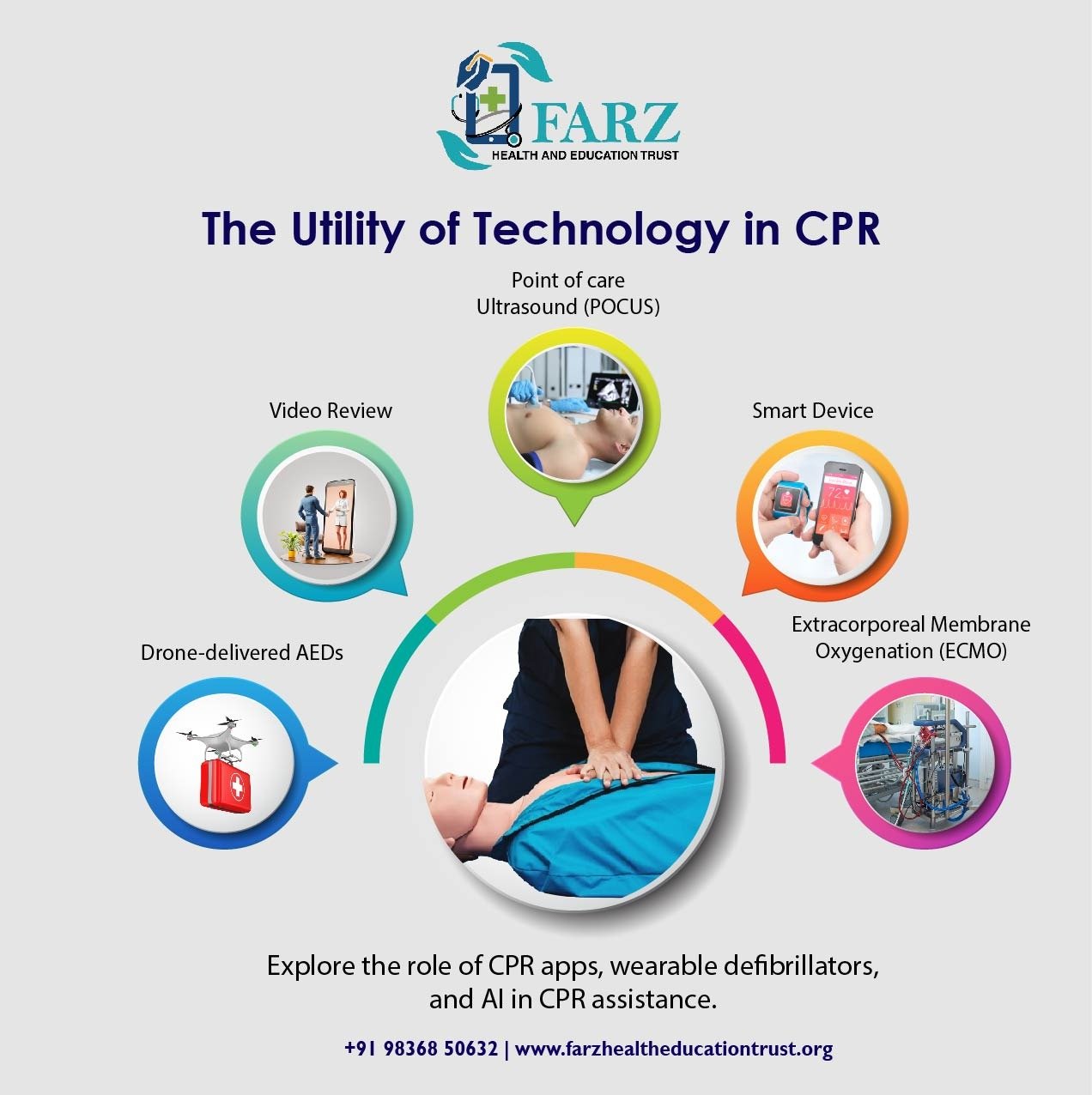
Cardiopulmonary resuscitation (CPR) remains a critical life-saving technique during cardiac emergencies. Yet, its application often demands quick, precise actions, which can be challenging for the untrained. Fortunately, advancements in technology have started to bridge this gap. With the integration of CPR apps, wearable defibrillators, and artificial intelligence (AI), the landscape of emergency response is transforming. This blog delves into how these technological innovations are enhancing CPR assistance.
CPR Apps: Guiding the Untrained
Real-Time Instructions
One of the most significant innovations is CPR apps. These applications offer real-time guidance to individuals during emergencies. For instance, apps like PulsePoint provide step-by-step instructions, ensuring that even those without formal training can perform CPR effectively. By utilizing audio and visual cues, these apps can guide users through each critical step, improving the chances of survival.
GPS Integration
Furthermore, CPR apps often incorporate GPS functionality. This allows users to locate the nearest automated external defibrillator (AED) quickly. In urban settings, where AEDs might be accessible, this feature can be particularly life-saving. The integration of GPS also helps emergency services locate the patient faster, further enhancing response times.
Community Alerts
Moreover, many CPR apps come with community alert systems. When a cardiac emergency is reported, nearby trained responders receive notifications, enabling them to provide immediate assistance before emergency services arrive. This collaborative approach leverages community resources, significantly improving survival rates.
Learn more about CPR When Things Get Weird
Wearable Defibrillators: Immediate Intervention
Continuous Monitoring
Wearable defibrillators represent another leap in CPR technology. These devices continuously monitor the wearer’s heart rhythm, providing constant protection. If a life-threatening arrhythmia is detected, the wearable defibrillator can deliver a shock to restore normal rhythm, buying critical time until professional medical help arrives.
Ease of Use
Designed to be worn discreetly under clothing, these devices are user-friendly and non-intrusive. They do not require any manual intervention from the wearer, making them ideal for individuals at high risk of cardiac events. This passive yet effective technology ensures continuous cardiac protection without disrupting daily life.
Early Detection
The ability of wearable defibrillators to detect arrhythmias early is crucial. Early detection allows for immediate intervention, which is vital in cardiac emergencies where every second counts. This technology ensures that the wearer receives prompt care, potentially preventing sudden cardiac arrest.
AI in CPR: Enhancing Accuracy
Predictive Analysis
Artificial intelligence is revolutionizing many aspects of healthcare, and CPR is no exception. AI algorithms can analyze vast amounts of data to predict cardiac events before they occur. By identifying patterns and anomalies in heart rhythms, AI can provide early warnings, allowing individuals to seek medical attention proactively.
Training Simulations
In addition to predictive capabilities, AI-powered CPR training simulations are becoming increasingly popular. These simulations offer a realistic training environment, enabling users to practice and hone their CPR skills. By providing instant feedback and suggestions for improvement, AI helps create more proficient responders, which is crucial in real-life scenarios.
Real-Time Assistance
During an actual cardiac emergency, AI can offer real-time assistance. For instance, AI-enabled devices can analyze the effectiveness of chest compressions and provide immediate feedback to improve technique. This ensures that CPR is performed correctly, maximizing the chances of resuscitation.
Limitations and Considerations
Accessibility Issues
Despite the benefits, access to these technologies can be a limitation. Not everyone owns a smartphone or has internet access, which can hinder the use of CPR apps. Additionally, wearable defibrillators may not be affordable for all individuals at risk of cardiac events.
Reliability Concerns
Technology, while advanced, is not infallible. There can be instances where apps or devices may malfunction or provide inaccurate information. Over-reliance on technology without proper training can also pose risks.
Need for Regular Updates
Technological tools require regular updates to ensure they function correctly and incorporate the latest medical guidelines. Users need to stay informed and ensure their devices and apps are up to date to be effective during emergencies.
Future Possibilities
Advanced AI Integration
Looking ahead, AI integration in CPR could become even more advanced. Future innovations might include AI systems capable of diagnosing a wider range of medical conditions and providing more detailed instructions during emergencies.
Enhanced Wearable Technology
Wearable technology will likely evolve to become even more user-friendly and effective. Future devices might offer longer battery life, improved comfort, and more advanced monitoring capabilities.
Global Accessibility
Efforts to make these technologies more accessible globally could include lower-cost devices and apps, as well as initiatives to distribute them in underprivileged areas. Collaborations between tech companies and healthcare organizations can help achieve this goal.
Community-Based Innovations
Encouraging community-based technological innovations can further enhance emergency response. Localized apps and devices tailored to specific communities’ needs can provide more effective support during cardiac emergencies.
Conclusion
Technology is playing a transformative role in the realm of CPR, providing crucial support through apps, wearables, and AI. These innovations are making it easier for untrained individuals to perform CPR, ensuring early intervention during cardiac events, and enhancing the accuracy of resuscitation efforts. By embracing these advancements, the potential to save lives in emergencies is significantly amplified. The future of CPR lies in the integration and continuous evolution of these technological solutions, ultimately creating a safer, more responsive world.
Farz Health and Education Trust remains at the forefront of this transformation, offering advanced CPR training programs that incorporate the latest technological tools. By participating in these programs, individuals can gain the skills and confidence needed to make a lifesaving difference in their communities.
